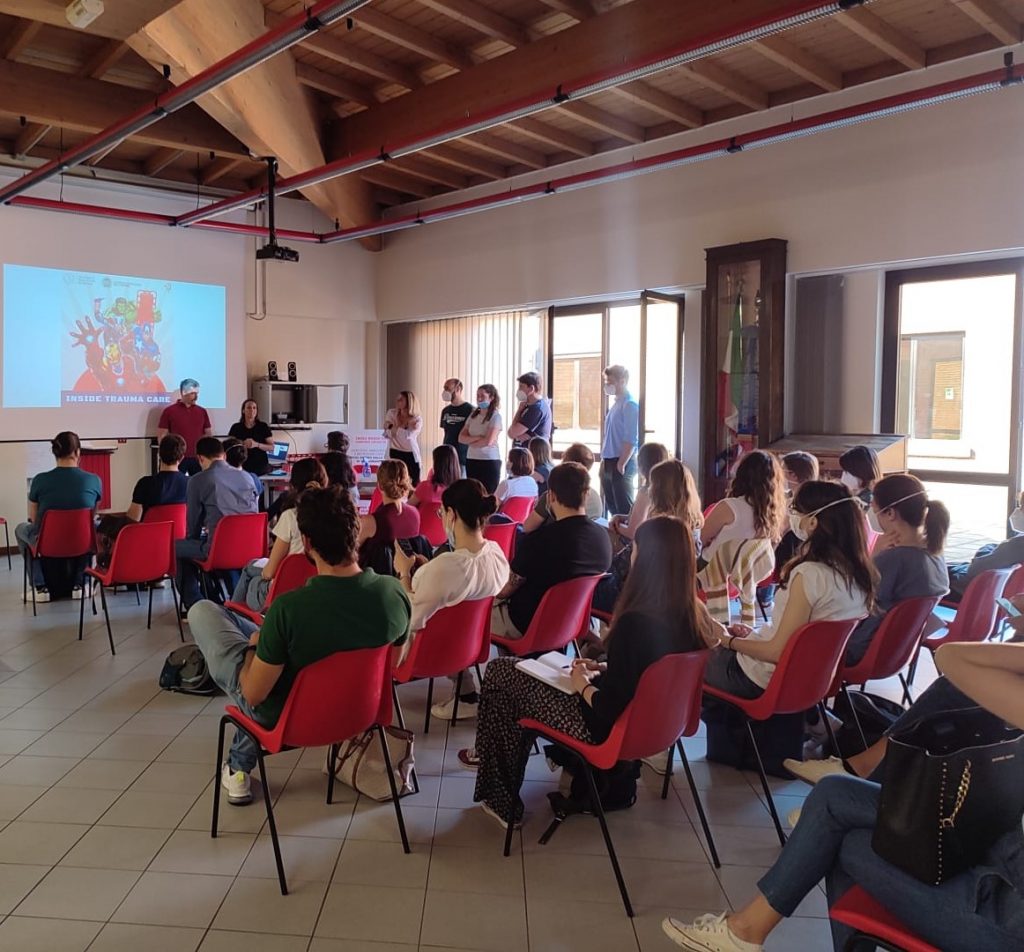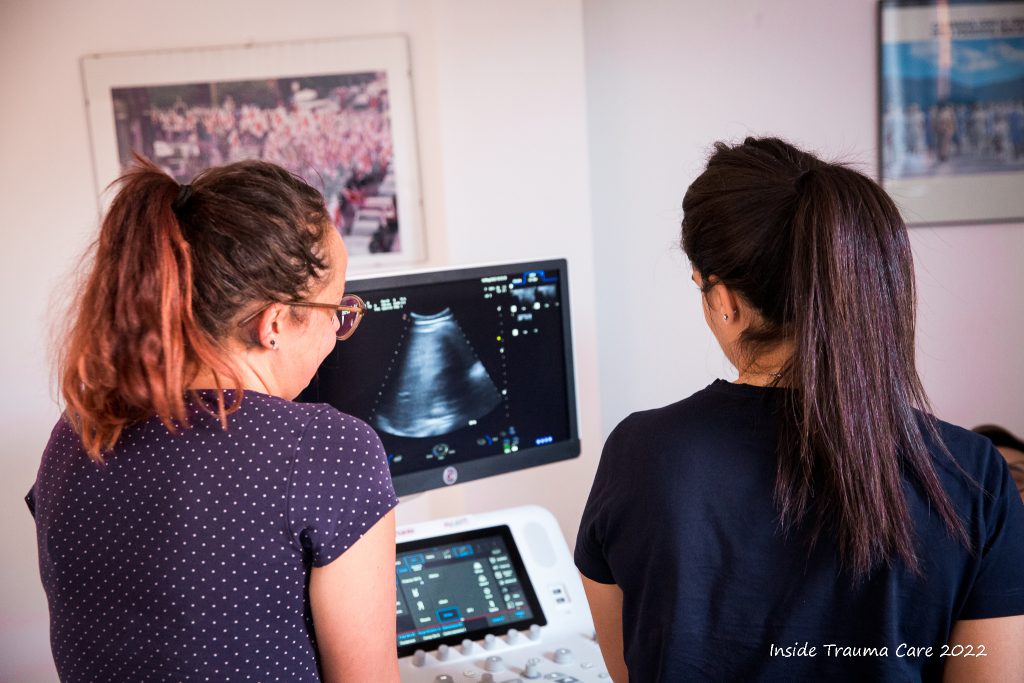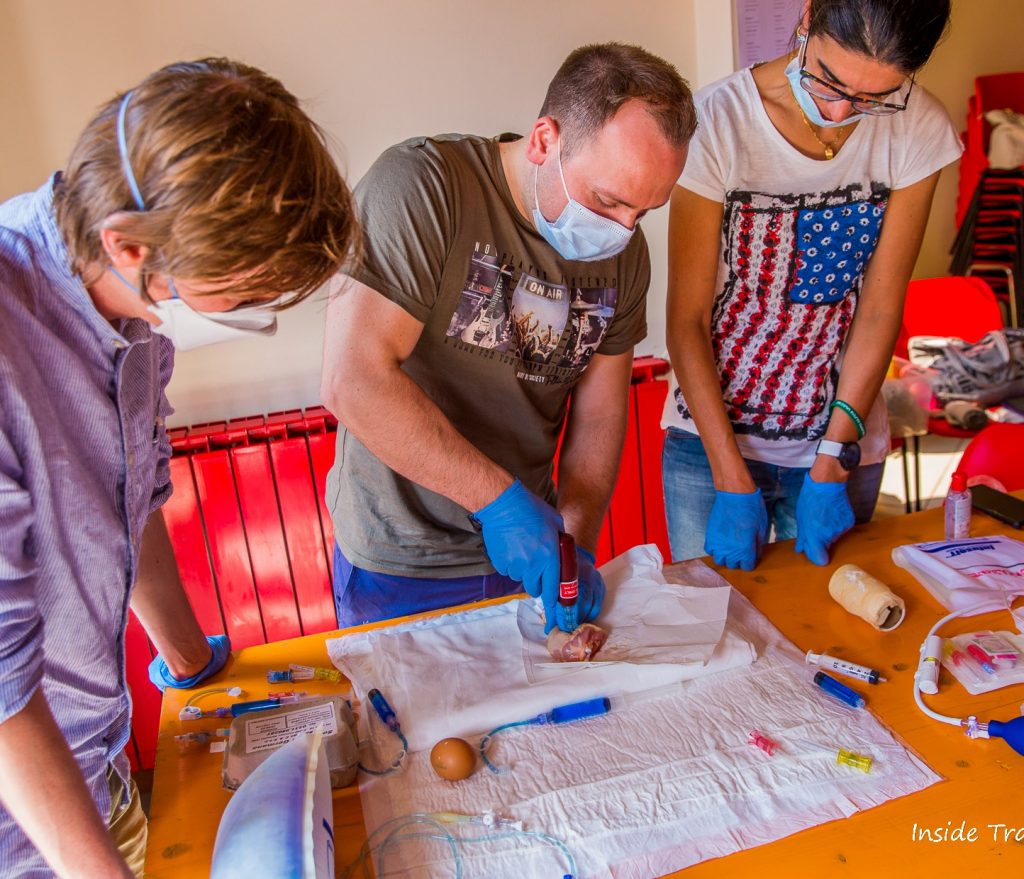Ultra-realistic scenarios of major trauma, dedicated simulators, instructors and teachers of different specialties. Let’s talk about the Inside Trauma Care course.
Good teamwork is the basis for dealing with one of the most difficult medical emergencies: treating a patient who is the victim of major trauma. To do this, excellent pathophysiological knowledge, technical skills and the ability to work in a team are required, optimizing the time and resources available.
But how do you prepare for such situations? How do you get ready as a Trauma Team Leader?
We tell you about the experience we had a few months ago together with postgraduate students from the Universities of Milan and Varese; anesthesiologists, surgeons, orthopaedists, emergency medicine doctors who will soon be at the forefront of our emergency departments and who have participated in Inside Trauma Care, an advanced theoretical-practical course on trauma management aimed at our future colleagues.
Luca, Claudio, Alexandrov, Giuseppe, Gabriel, Laura are just some of the patients that each of us instructors has helped, complex patients who have put us in difficulty and for this very reason they have remained in our hearts and have taught us so much. Inside Trauma Care is this: a group of teachers belonging to different specialties and from different working realities who try to pass on their knowledge by talking about what they do every day, transforming their experience into simulated cases and building scenarios that are extremely close to reality. And if reality is complex and our work challenging, the course was just as complex! It was a three-day full immersion that started from the basics and arrived at the most advanced concepts of trauma treatment, not only in the emergency room but throughout the initial stabilization phase of the patient: from the territory to the operating room and the first days in intensive care. And so the theoretical part was concentrated in two morning sessions in which resuscitators, surgeons, radiologists, coagulation experts, emergency medicine doctors took turns. The topics addressed were various: from the ABCDE to the principles of damage control resuscitation, from trauma-induced coagulopathy to the hypothermic patient, from penetrating traumas to blast injuries.

To recover from the fatigue of theory, in the afternoon of the first day the trainees took turns in practical hands-on stations, in which they experienced the skills necessary for adequate trauma assistance.


What was learned on the first day was then put to the test in the simulated scenarios of the following two days: real cases with increasing degrees of difficulty, original imaging and exams that had to be interpreted, technical skills to be implemented (which one and when??), ability to work in a group involving different specialists who did not know each other (as in the reality of our emergency departments).

Simulators created especially for the course made it possible to try out even the most advanced damage control surgery maneuvers, such as preperitoneal pelvic packing or resuscitative thoracotomy, with the aim that the whole team learned their indications and execution techniques.
An escalation that culminated in the outdoor scenario which, thanks to the help of our teachers from the National Alpine and Speleological Rescue Corps, forced the trainees to deal with a scenario of multiple casualties in a mountain environment. Which patient to transport first? Who to apply to ECMO? What are the essential life-saving maneuvers before evacuating patients from a partially safe scene?

The precious collaboration with the Varese Red Cross has also given the possibility to experiment with simulations featuring specially trained and made-up actors: screams, cries, apprehensive relatives and all that we find in real situations and that we must learn to manage.

The collaboration with the two Universities has enriched the theoretical part with the lessons of professors Severgnini (blast injuries and intoxications) and Festi (hypothermia), up to the conclusion with those who made and wrote the history of the Trauma System: the professors Osvaldo Chiara and Nino Stocchetti who gave a technically and humanly regenerating conclusion.
Would you like to test yourself too? The Inside Trauma Care team of instructors is waiting for you!

READ ALSO









































